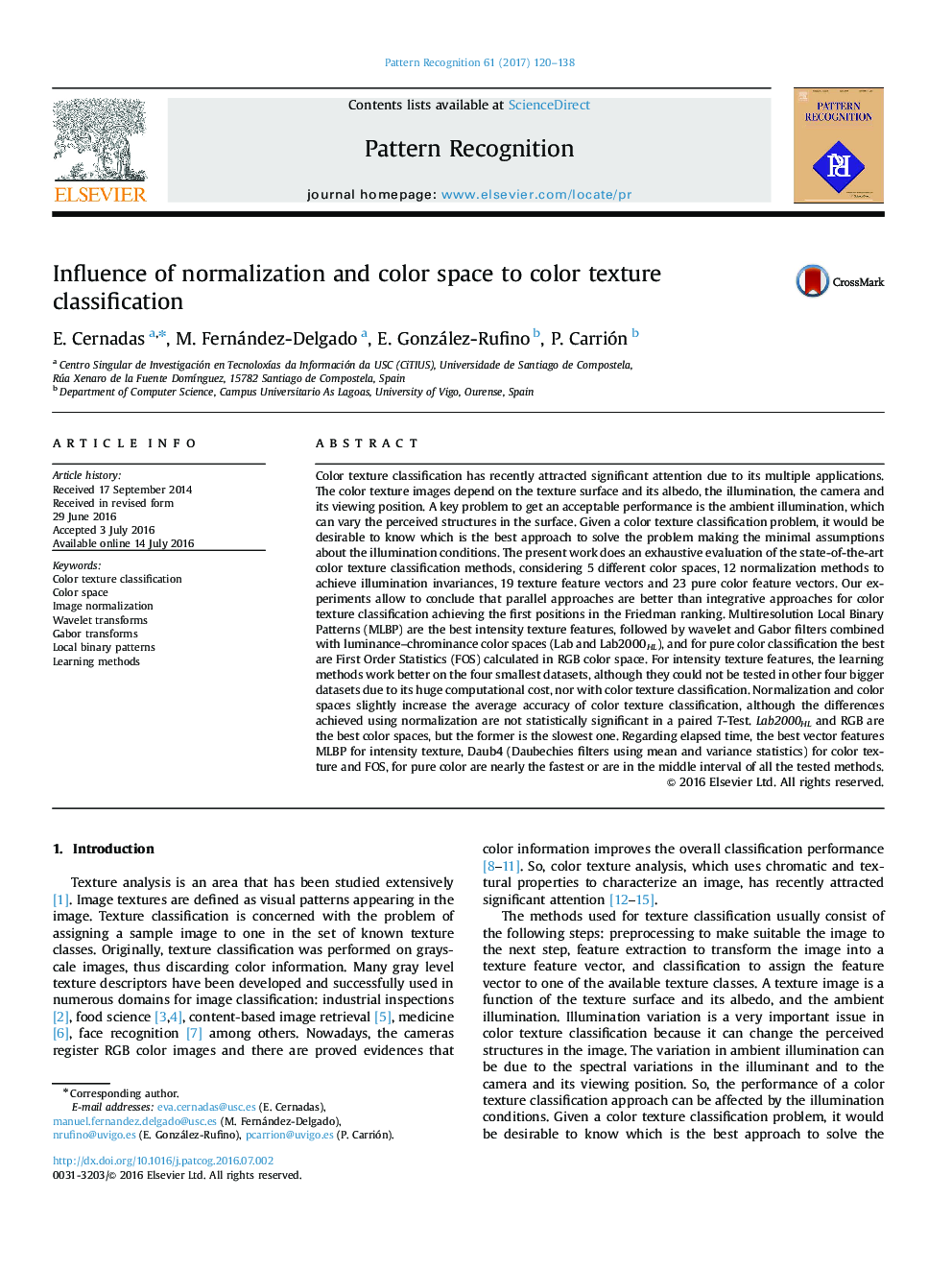| Article ID | Journal | Published Year | Pages | File Type |
|---|---|---|---|---|
| 533069 | Pattern Recognition | 2017 | 19 Pages |
Abstract
Color texture classification has recently attracted significant attention due to its multiple applications. The color texture images depend on the texture surface and its albedo, the illumination, the camera and its viewing position. A key problem to get an acceptable performance is the ambient illumination, which can vary the perceived structures in the surface. Given a color texture classification problem, it would be desirable to know which is the best approach to solve the problem making the minimal assumptions about the illumination conditions. The present work does an exhaustive evaluation of the state-of-the-art color texture classification methods, considering 5 different color spaces, 12 normalization methods to achieve illumination invariances, 19 texture feature vectors and 23 pure color feature vectors. Our experiments allow to conclude that parallel approaches are better than integrative approaches for color texture classification achieving the first positions in the Friedman ranking. Multiresolution Local Binary Patterns (MLBP) are the best intensity texture features, followed by wavelet and Gabor filters combined with luminance-chrominance color spaces (Lab and Lab2000HL), and for pure color classification the best are First Order Statistics (FOS) calculated in RGB color space. For intensity texture features, the learning methods work better on the four smallest datasets, although they could not be tested in other four bigger datasets due to its huge computational cost, nor with color texture classification. Normalization and color spaces slightly increase the average accuracy of color texture classification, although the differences achieved using normalization are not statistically significant in a paired T-Test. Lab2000HL and RGB are the best color spaces, but the former is the slowest one. Regarding elapsed time, the best vector features MLBP for intensity texture, Daub4 (Daubechies filters using mean and variance statistics) for color texture and FOS, for pure color are nearly the fastest or are in the middle interval of all the tested methods.
Keywords
Related Topics
Physical Sciences and Engineering
Computer Science
Computer Vision and Pattern Recognition
Authors
E. Cernadas, M. Fernández-Delgado, E. González-Rufino, P. Carrión,
